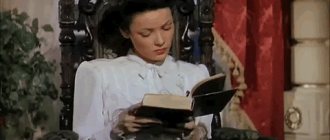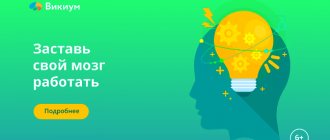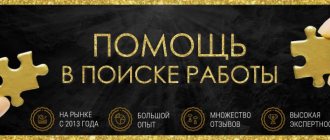Hello friends! Lyudmila Redkina is with you. There are times when we need to process a huge amount of information. And it is important to “swallow” and remember these terabytes of new knowledge correctly. There are many different techniques that develop memory and thinking, but I want to talk about speed reading, which makes your brain more active, increases the speed of all mental processes, you move forward and keep up with the times! Below I will tell you how to learn to read quickly and describe effective methods for developing speed reading.
COMPLETE LIST OF HUMAN SKILLS
Benefits of Fast Reading
Brain research has given us valuable information: it can “think out” without awareness, “complete” without the whole picture. But many people have no idea about this. We are trying to improve memory and brain function, although initially we do not know what it is really capable of.
Did you know that without vowels in a line you will understand what is being said? Did you realize that when you close the third part of the text vertically, you will also fully understand its meaning? Teaching speed reading techniques is based on these seemingly trifles. But when “absorbing” large amounts of information, speed reading saves a lot of time.
Most likely, among your friends there is a person who needs a maximum of 1 day to read a book, while you will need about 5 days. Yes, and sometimes it’s so difficult to force yourself to read a book! There are not many people who read quickly, but they use this skill to their advantage to develop their thinking and succeed at work. Who would refuse success and saving time?!
As you watch people read quickly, you may have noticed how they turn the pages within seconds. Do they really not remember or see anything? They see everything, but when reading this way, their brain works hard according to a previously worked out scheme, the person knows:
- what information is he looking for;
- how it will be useful to him in life;
- what other ways can he obtain such information?
All these tricks help you cope with the task of obtaining information as quickly and efficiently as possible.
Method 7. Determining paragraph topics
Each paragraph (if you read it carefully), or rather, all its phrases are united by a specific topic. If you learn to identify topics, you will greatly improve the quality of information you absorb.
How to train?
Just!
Take any book, read one of the paragraphs and try to quickly determine the topic. Next, take 5 minutes and determine the topics of the maximum number of paragraphs in this short period. The minimum number of identified topics per minute is 5.
And a couple more tips for the road:
- Reduce the length of time you pause on each line.
- Train skills individually. Don't try to cover all the techniques at once.
- Stop running your eyes along the line - take in the entire line at once.
Preparation
To learn how to read quickly at home, you need to prepare. Our main computer will do the rest for us. The brain is used to working quickly. If you quickly read this text now, you will understand what we are talking about.
According to rzeuzlattam ilssoevadny anligsyokgo unviertiseta, not vzhnao, in kaokm proyakde in solve rsapjooleny bkuvy. Galovne, so that the preavya and pslonedaya bkvuy blyi on the mseta. Osatlyne mgout seldovt in ablosyuontm bsepordyak, all-torn tkest without wandering chtaitsey. The main thing is that we consider everything as a whole, and not separately.
Happened? Me too! If you don’t think about each letter separately, you can “swallow” a large piece of text, even if the words and letters in it are confusing.
You can also try to read the text in this picture, where some letters are missing at all, they have been replaced, but the brain still reads the text, and you understand the meaning.
Speed reading mixed up letters You have decided to develop your speed reading, but where to start? I recommend starting with statistics so that over time you can see what you have achieved. Statistics is a test that will tell you how fast you read.
An excellent tool is the reading speed test on the Wikium website. This is an excellent development platform where you can find exercise equipment for brain development. I can boast of my results: 600 words per minute and 50% text comprehension. This is an average level, there is still something to strive for. What are your results? Please note your initial results in the comments.
After passing the test, it's time to start developing your speed of reading and understanding information. Yes, that's the rub. You can read quickly, but in order to remember what you read, you need to practice.
By the way, about children. It is quite difficult to teach a first-grader how to speed read, but a girl or boy of 9–10 years old can be trained to quickly and understandingly absorb information. Various techniques help with this, in particular a table of syllables.
Watch your breath
There is a special reading technique: read aloud a sentence that does not carry a semantic load, in one breath. You only need to exhale when the sentence you want to emphasize begins. This creates a pause that is not provided for in the written text. You can intonate without thinking, using only your breath. There is no need to emphasize every word, because in the text all words cannot be the main ones. It should be understood that important words may be different for each reader. That is why people sometimes read the same work with completely different intonations, which give a feeling of warmth, coldness, detachment, despair, everything that cannot be expressed in words.
Syllable table
The syllable table helps to train reading at any age. Below is a simple table in Russian.
| A | ABOUT | U | E | AND | |
| B | BA | BO | BOO | BE | BI |
| IN | VA | IN | VU | BE | IN AND |
| G | GA | GO | GU | GE | GI |
| D | YES | BEFORE | DU | DE | DI |
| Z | BEHIND | ZO | memory | WE | ZI |
To improve your skill, read out loud all the rows of the table to the right and left. Gradually speed up your reading pace. Then you can move on to syllables consisting of 2 consonants and 1 vowel.
| A | ABOUT | U | E | AND | |
| NS | NSA | NSO | NSO | NSE | NSI |
| MK | MKA | MKO | MKU | MKE | MKI |
| WB | VBA | UBO | Wetland | VBE | nosocomial infection |
| ETC | PRA | PRO | PRU | PRE | AT |
| ST | STA | ONE HUNDRED | STU | CTE | STI |
The training technique is the same here. Try to reach your maximum reading pace. It is necessary to read aloud to an adult in order to develop rapid reading.
A child of 7 years old can also be given these syllable tables when learning to read. This will be a kind of stimulation for reading for his brain and visual analyzer.
Using this technique, already at the age of 10 the child will be different from his peers. After all, at this age, children’s brains are especially plastic and receptive to educational programs. It’s us adults who need to think about how to develop memory and attention in order to work more efficiently.
Develop attention and memory
Reading quickly requires concentration and attention. By consciously managing our attention when reading, we increase its speed. Distracted by extraneous thoughts and objects, we begin to read the text mechanically and its meaning simply does not reach our consciousness. In addition, motivation to read decreases. Therefore, an important principle is to work on your attention, learn to manage it.
The ability to concentrate can be trained by reading backwards. When we are distracted by a foreign object, our attention is lost, and this fact is easy to detect.
The same goes for memory: forgetting what the previous sentence or paragraph was about, we force ourselves to go back and reread, wasting time unwisely.
How to learn speed reading with exercises
You can help your child learn to read quickly using the following exercises:
- Reading simple words. Write the words on separate sheets of paper: house, hedgehog, cat, moat, whale. Show them to your child, and he should read them as quickly as possible. When he learns to read them instantly, write words of 4 letters, then 5. After that, move on to word combinations.
- Show your child words with pictures first. Then cover the pictures. The next step is to show words along with examples so that he learns to quickly count in his head. Make sure that he reads correctly, because not only visual memory is involved in the process, but also auditory memory.
- Along with the development of rapid reading, develop diction. To do this, use tongue twisters or rap with your children (within reason!). Exercising together with your child will bring a lot of positive emotions to you and a lot of impressions for the child.
By the way, such training is suitable for learning to read French, German, English and any other foreign languages. In addition, you will also be able to read with mixed up letters, since this speed reading technique also works in foreign languages.
Speed reading techniques in different languages
But you can’t read it like that in Arabic, because it uses signs instead of letters.
Exercises for adults differ from those listed above. The following tasks will help you read quickly.
Settings
Tune in. Look at the picture of your desktop, look at its small details. Then close your eyes and remember the whole picture, down to the smallest detail. Open your eyes and compare the real picture and the imagined one. When reading, you need to pay attention to the content, and not to the smallest details.
Metronome
If you have a metronome, set it to a slow speed. Read the passage of text slowly. Then increase your speed. You should achieve not only quick reading, but also understanding of the text.
Reverse order
Read in reverse order. The reading speed to the right and left should become equal.
Help from a friend
Ask someone to find a word in the text, then find it as quickly as possible. Practice this several times.
Slip
One of the fastest ways to learn is the “sliding” exercise. Do not peer at the letters, but try to cover the maximum number of units in a few seconds: letters, signs, numbers. At first you will remember little, then you will be able to absorb more and more information.
By the way, this exercise works when learning to read notes from a sheet, drawings and other necessary information.
Diagonal
An exercise where you read the beginning and end of a line. There is even a program for reading diagonally. At first you will not understand anything, but after some time of training you will see that your brain is absorbing much more information.
What are the general recommendations?
- It is useful to read at different paces: sometimes quickly, sometimes slowly (the main thing is clearly).
- Try to read with extraneous sounds (this will teach you to concentrate).
- Practice reading “through the grid” (to develop the ability to guess the meaning, in this case there is no need to read the word to the end - anticipation).
- Alternate familiar/unfamiliar text (after reading a familiar text several times, the reading speed increases and is transferred, in part, to the unfamiliar text).
- Develop visual memory.
Useful tips on how to learn to read well and quickly
As you learn to quickly process written information, you should use the following tips.
Don't say the words
Try to read only with your eyes. Even at school, we get used to pronouncing words in a whisper when we read a text. This interferes with speed reading. It is known that moving the lips slows it down. So break this habit if you want to speed up your reading.
Don't come back
Often, when the reader finishes a line, he returns to the one he just read. This slows down the pace significantly. Try not to return to the same line several times; it is better to use a ruler or your index finger.
Don't miss the text
An amazing technique is text tracking. Turning your head and using your hands to help speed up the reading process. Connecting peripheral vision is very useful for mastering a huge amount of information.
Learn
Don't forget that any skill requires dedication and training. You can learn how to read better from books. For example, the book by E. A. Nefedova and O. V. Uzorova “The fastest way to learn to read” will be very useful for you. Syllable tables.” These authors also help you learn to read English quickly.
Video
Also be open to receiving helpful tips from video sources. See one of them below.
Brief introduction
Being able to read quickly is not just about words. The main value of this skill is that it can free up a huge amount of free time, allowing you to master any literature, from technical to fiction, at least three times faster. Not a bad result, do you agree?
Many people believe that achieving such a result will require months of hard work and training. But this is not the case at all - you will be able to read faster after just half an hour of your first lessons. To prove this, we want to invite you to conduct an interesting experiment, but first we will say a few more introductory words.
This article is based on data from a PX Project workshop held in 1998 at Princeton University. This seminar was dedicated to fast reading, or more precisely, to increasing reading speed.
The PX Project was a special cognitive experiment that lasted three hours. According to the organizers’ idea, after completing it, participants could increase their reading speed by 386%. The participants themselves were people of different language groups, and some of them suffered from dyslexia. But even they learned to read up to 3 thousand words per minute, which is about 10 printed pages, i.e. they read one page in 6 seconds!
If you are interested, here are some statistics: Americans read approximately 200-300 words per minute, and Russians read 120-180 words per minute, which is due to language characteristics. But anyone can increase this figure to 900 words per minute. The only thing that is necessary here is to master the principles of operation of the visual apparatus, to realize what time is spent on when a person reads, and to stop wasting it on it.
Having dealt with the main mistakes, having practiced a little and gaining a little experience, you will already begin to read noticeably faster. At the same time, you will not just “stupidly” look at the text and run your eyes over it without catching the meaning, but will learn to perceive what you read and remember it.
In short, let's get down to practice. Below we will give a slightly modified variation of the exercises from the PX Project, and at the end of the article we will offer a number of auxiliary recommendations. Although now it won’t hurt to get acquainted with useful tips. Let your learning begin by watching this video.
Training for mastering speed reading
The Speed Reading course from Vikium will help you achieve excellent results. The course will allow you to improve the processing and memorization of information. You will receive exercises to develop attention and memory, exercise equipment to activate brain activity, and master various techniques for concentration and peripheral vision.
Vikium offers a 7-day money back guarantee!
This investment in yourself will pay off very quickly, and you will become much more productive.
In any case, friends, you have several options on which way to go: you can improve yourself or buy a course for little money and achieve results as quickly as possible.
Also on our blog there is a selection of the 11 best speed reading courses.
Check out 11 courses →
When should you teach your child to read?
When to start? One child already knows the entire alphabet at the age of three, while another begins to show interest in books only at the age of five. It's not a matter of age, but a child's readiness to master literacy. Key indicators of such readiness:
- the child speaks in separate sentences;
- pronounces most sounds clearly;
- can consistently tell how he spent the day in kindergarten or visiting his grandmother;
- navigates in space, knows the concepts of “left”, “right”, “up”, “down”;
- holds attention, can do one thing (draw, sculpt, assemble a construction set, etc.) for 10–15 minutes.
Teaching a child to read should begin not with letters, but with sounds. It is sounds that he hears from birth, and letters are a means of recording sounds. Having learned to distinguish sounds in spoken words, merge sounds into syllables, and divide words into syllables, the child will easily master reading.
Take notes
Always keep a pencil with you, as well as several small bookmarks or a notepad. It is important to highlight significant moments so that later you can briefly review them and remember or see what previously seemed hidden. This is especially true for educational or work literature, since it will never be possible to learn something serious without notes. While reading a work of art, you can also make notes in a notebook about your thoughts about the further development of the plot.
Articulation suppression
Schoolchildren cannot read without pronouncing the words to themselves, moving their tongue. For speed reading techniques, this needs to be corrected and eliminated. To combat this you can use:
Musical accompaniment
The text is read to the music. After a few lessons, music with words is turned on. It is advisable to use classical compositions. You should not include fast rhythmic compositions.
"Bumblebee"
When reading, the child is disturbed by a monotonous sound, similar to the buzzing of an insect.
Rhythm
During classes, an adult rhythmically taps his finger on a table or other object. Gradually the rhythm speeds up.
Lock
The child should purse his lips tightly and read to himself as quickly as possible. For additional effect, you can cover your mouth with your palm.
Think about what you read
The key to correct reading is the acquired material. Mindlessly flipping through the pages of a book is not enough, especially if it contains a lot of useful information and educational material.
To learn it and not forget about the book the next day after reading it, we recommend using a number of methods:
- Read as carefully as possible. Enjoy the process. Don't be distracted by your phone, social networks, extraneous matters or other little things.
- Write notes about the most important and significant things you learned from the book. Write down catchy moments, interesting quotes, useful ideas for life.
- Write a journal entry. In it you can describe the main events, reflect your attitude towards the characters, and share your thoughts about the book. This will allow you to comprehend and better remember what you read.
- Watch film adaptations of the works you read. They will help you see a different interpretation of characters and events.
- Apply the acquired knowledge in practice.
Summarize, analyze
After reading, give yourself a little time so that what you read fits into your head. Then create a unique report that describes the most important things:
- What did you read about?
- What happened? What are the reasons?
- Are the events described instructive and interesting?
- Do you agree with the author?
- What conclusions can be drawn?
This approach will allow you to get the most out of the book, which is the goal of learning to read most effectively. Additionally, you can write your personal reviews of what you read or discuss everything with friends.
Take several books at once
This advice only applies to the case when it is necessary to work with serious literature that is not related to fiction. For example, when studying the traditions of a country. You need to use many books to get a complete understanding of the issue being studied, eliminating the risk of receiving false or misinterpreted information. Also, do not forget to compare what you read with your existing knowledge. And if the work is presented in several parts, then they should be read strictly in chronological order.
We teach a child to divide words into syllables
Before your child begins to master literacy, teach him to divide words into syllables. Pronounce the words by clapping the number of syllables. In Russian, a word has as many syllables as there are vowels: sa-mo-let, ka-ran-dash - 3 vowels, 3 syllables; u-zhi - 2 vowels, 2 syllables; sport - 1 vowel, 1 syllable, 1 clap.
Play Finish the Word. You throw the ball to the child, saying the first syllable of the word, for example, “ma.” The child returns the ball, calling the ending, for example, “sha.” Say the word in full: Ma-sha. Guess the endings of words, change places with your child.











